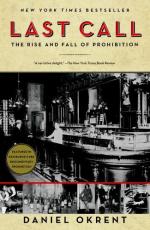|
This section contains 864 words (approx. 3 pages at 300 words per page) |

|
Prohibition, which lasted from 1919 to 1933, attempted to eliminate the consumption of alcoholic beverages but instead created a legacy of bootleggers, flappers, and speakeasies. Widespread crime in American cities and corruption within the Prohibition enforcement agencies resulted. Profits from illegal alcohol and disrespect for the law grew during the period of legislated moral behavior.
The states ratified the 18th Amendment to the United States Constitution in January of 1919, and nationwide Prohibition began on January 29, 1920. The Amendment made the manufacture, sale, and transport of alcoholic beverages illegal. The widely accepted Volstead Act provided enforcement of Prohibition and was enacted in October of 1919.
Prohibition had its roots in the temperance movements to reduce alcohol consumption in the 1820s. The state of Massachusetts was the first state to enact prohibition laws when it prohibited the sale of spirits in less than 15 gallon containers. This law passed in 1838 and was repealed two years...
|
This section contains 864 words (approx. 3 pages at 300 words per page) |

|


